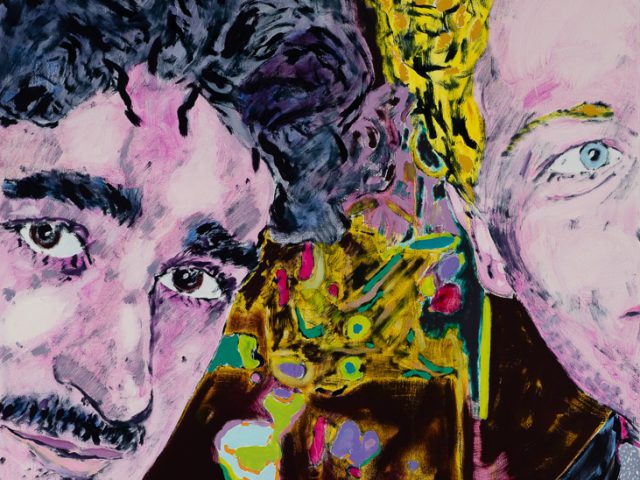May 11 – June 30, 2023
Opening reception:
Thursday, May 11, 2023
6 – 8 PM
Unlike other marginalized identities, queerness is not primarily passed down from generation to generation. Situating oneself in the cultural legacy and history of queer life is not as simple as looking to parents or older relations.
For LGBTQ+ artists from Generation X specifically, this search for communal belonging and a place in history is complicated by the devastating impact of AIDS. This generation tragically lost many ground-breaking community activists, innovators, and artists who would have served as living mentors, leaving an indelible void for the next generation of artists.
Many queer Gen X artists who came of age artistically at the turn of the millennium make work permeated by a sense of longing for connection and for another time. Robbed of would-be mentors, many sought out non-contemporaries from far earlier generations, a strategy which serves as an escape and a form of cherry-picked aesthetic nostalgia.
Writer Garth Greenwell talks about this escapist tendency as “queer time,” in which “queer people caught in an unbearable present embark on a journey through time, seeking resources in the past to imagine a more livable future”. Greenwell goes on to state that “this double movement, looking backward and ahead at once . . . is a hallmark of queer style.”
The exhibition “My Velvet Shadow” presents three Gen X painters— John Brooks, Anthony Goicolea, and Kris Knight—whose work exemplifies queer time and queer style. These artists came of age with the residual fear that sex, intimacy, and love could likely lead to death. Their work incorporates anachronistic coded language and cross-cultural signifiers. It neither takes on the mantle of radical sexuality as activism prominent in 1980s predecessors such as David Wojnarowicz, Robert Mapplethorpe, Peter Hujar, and Jack Smith; nor does it celebrate the unabashed sexual exuberance of many younger queer artists.
Instead, the work in “My Velvet Shadow” carves a space between melancholy and joy. It presents mostly solitary figures in moody, ambiguous scenarios that hint at conflicting emotions and desires. These char- acters are rarely engaged in action; they dare the viewer to stare and to grapple with the resilience of beauty. Presented alone in the devastating aftershock of a gay plague, the subjects of these works exist/survive in unguarded vulnerable states surrounded by a host of disparate appropriations that act as a twisting road map for the preservation of queer culture. Instead of radical sexualization or earnest intimacy, the work adopts revelatory beauty to salve the scabs and scars of inherited trauma.
Queer visibility influenced huge swaths of mainstream culture during the 1970s and early 1980s, but the initial panic and fear associated with the AIDS epidemic pushed that visibility back into the shadows. The lack of government response during the Reagan administration and the social stigmatization associated with AIDS and homosexuality generated a “don’t ask don’t tell” response to LGBT issues and culture. A generation of artists developed works that subverted this blind-eye approach and forced the public to unwittingly look and hold a space for them. Finding beauty in the midst of uncertainty and chaos generated by the aftermath of an epidemic, nationalism, culture wars, and the far right is an act of defiance. It is now as it was then.
The three artists represented in “My Velvet Shadow” look backward and forward at once. By doing so, they bridge two generations of queer artists while processing some of the most traumatic moments of the near past. Wielding beauty as a weapon, these paintings mirror the past and confront the viewer with an exhausted yet knowing gaze toward the future.

































































